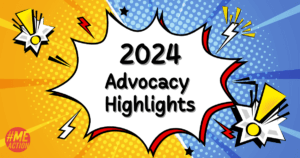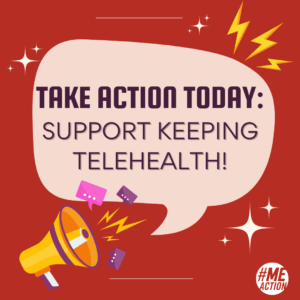N.b. We wrote this article prior to more of the appointments for the guideline development committee being made. Some of these appointments are inappropriate and we are working on a response to that. There are still some committee vacancies that have yet to be filled. We’ll update everyone as soon as possible. In the meantime this is our analysis of NICE’s response to stakeholder input and the final scope.
The National Institute for Health and Care Excellence (NICE) final scope for the new “ME/CFS guideline” was released last week. The guideline will be finished in October 2020.
The scope is the framework for the new guidelines and lays out what will and won’t be included. The guideline development committee will follow the scope when looking at evidence and forming the new guidelines. The initial draft scope has been revised and the final version now published, as well as the responses from NICE to stakeholders. #MEAction UK is one of the key stakeholders identified during this process.
[maxbutton id=”21″ url=”https://www.nice.org.uk/guidance/gid-ng10091/documents/final-scope” text=”Read the final scope” ]
The publication of the final scope follows the process in which #MEAction UK submitted a comprehensive and detailed response to NICE in July 2018. While #MEAction asked for the immediate suspension of GET and CBT, NICE has not taken any action to add an interim warning to the current guidelines stating that GET and CBT should not be used. However, NICE has replied to our ask, stating that “we will address the clinical and cost effectiveness of treatments including GET and CBT as soon as is feasible in the development of the guideline”. #MEAction urges NICE to add the warning we proposed immediately.
In response to our comment that “these interventions are ineffective, harmful and scientifically untenable”, we are pleased to see that NICE has announced that “to allow a robust analysis we also plan to review the published evidence on patient experience and conduct a call for evidence so that harms are identified and taken into account by the committee.” We look forward to contributing to this as patients’ voices must be heard and taken into account by NICE in order to build a solid guideline.
NICE have also added ‘adverse effects’ to the list of main outcomes they will consider when reviewing the evidence. This was a glaring omission, and we are relieved to see it has been rectified. Other welcome additions include ‘care needs’ and ‘impact on the carer’.
We raised serious concerns about the use of subjective questionnaires as opposed to objective outcomes. Although NICE have not changed the scope to pre-specify objective outcomes superiority, they have stated “the methods used by the technical teams in guideline development, including GRADE, do assess blinding as you describe when examining quality of evidence and will downgrade subjective outcomes.”
In addition, NICE answered #MEAction’s notes on the GRADE system, concerns about the quality of evidence for an intervention and our statement that the Cochrane reviews have been specifically criticised as reviewers had undisclosed commercial and academic interests. They state the “guideline will not be using existing Cochrane reviews but will review the evidence directly. The GRADE method allows for the downgrading of any study described as an RCT.” It’s important that the NICE committee has in mind their power to downgrade Randomised Control Trials (RCT) if their methodology is flawed, as reviews of evidence can lead to biased conclusions if they include biased studies. This has been the case with the temporarily retracted Cochrane review.
[maxbutton id=”21″ url=”https://www.nice.org.uk/guidance/gid-ng10091/documents/consultation-comments-and-responses-2″ text=”Read the consultation” ]
NICE agrees with our recommendation to include pacing, as #MEAction considers that is the management strategy most beneficial for people with ME. We are also pleased to see that our comments with regards to the distinction between post exertional malaise (PEM) and fatigue have been taken into account as we are concerned by a disproportionate focus on ‘fatigue’, at the expense of more disease-specific language such as PEM.
ME is a positive diagnosis and the guidelines should not attempt to cover everyone who has fatigue, which is a non-specific symptom of many conditions. NICE appears to agree with this statement, saying that the guideline will not cover chronic fatigue associated with other disorders.
In the final scope NICE adds: “People with ME/CFS experience a wide range of symptoms and comorbidities. ‘Profound malaise’ has been proposed instead of fatigue to describe a characteristic symptom on the basis that fatigue does not adequately describe the severity of symptoms. Post-exertional malaise and deterioration of symptoms are considered typical of ME/CFS.” As we suggested, NICE has also added other common symptoms, including chronic pain, disordered sleep, cognitive difficulties, digestive, autonomic, sensory and motor dysfunction.
We are deeply concerned that NICE has decided to remove from the scope the sentence “for most people with ME/CFS, everyday life is severely disrupted and a complete recovery is unusual”. This change was based on suggestions from two respondents, including the Royal College of Psychiatrists. Yet the reference given by the Royal College of Psychiatrists to support this change confirms that recovery is rare, stating only 5% of people with ME recover. There is no utility in removing this objective and important fact from the scope.
We are glad to see NICE state that children and young people, and people with severe ME/CFS “will be considered separately in every review question”. They have also said: “We are exploring ways of involving people with severe ME and enabling them to share their experiences with the committee.” However, NICE have said this previously and we are yet to hear of any concrete steps being taken towards this end. NICE must either put forth an adequate proposal to involve these groups, with the option for stakeholder input to refine it, or engage with patient organisations to assess the best way to do so. We have not yet seen such proposals or engagement.
NICE have concurred with our call to consider inequality relating to disability (including, of course, ME itself), gender, LGBT+ status and age. These are all now included in the equality impact assessment, along with older people, pregnant people, black minority ethnic, and men. However they have merely stated these groups are not excluded from the scope, and haven’t made any attempt to suggest how such inequalities may need to be addressed in the new guideline.
[maxbutton id=”17″ url=”https://www.nice.org.uk/guidance/gid-ng10091/documents/equality-impact-assessment” text=”Equality Impact Assessment” ]
From the amendments NICE has made to the scope, and its responses to stakeholders, such as #MEAction, we see some concerns have been taken onboard. However, we will continue to fight for solutions and equality for people with ME in the interim and we remain cautious. During the last Westminster Hall debate, MPs slammed the PACE trial and the NICE guidelines, called for biomedical research, and decried the decades of abuse people with ME have faced in the UK. Our advocacy efforts in the UK continue and your help is essential! Take action by supporting #MEAction or joining one of our groups!
We would also like to congratulate Adam Lowe and Sally Burch, both stalwarts of the UK ME community, who have been appointed as lay members. We know they will fight our corner with rigour and precision. We are awaiting further news about future committee members and will comment on these once full appointments have been made.
Exploring the Galaxies: Day In the Life of Our Director U.S Advocacy Director
We only have 17 days left for our End Of Year Fundraiser! Time is flying by! We still have about $100,000 to raise to reach our goal. That is a heavy lift, but we know each donation can make a difference. Can you donate today to help #MEAction Go Boldly through 2025? Donate Today! Now





4 thoughts on “The final NICE scope is here: read our analysis”
We sufferers NEED to be medically tested in more/Different ways to help speed up FINDING A WORLDWIDE CURE for us 250,000 Sufferer’s in the UK!!!…. 🙂
N.I.C.E. & the BMA Should be talking to us,individually;too…… 🙂
In what other disease are doctors with extensive clinical experience excluded from the GDG? Compare….
#MEAction states that they support ICC. Why then do you use the term PEM (from the IOM/SEID criteria) and not PENE (from ICC)? “Malaise’– a vague feeling of discomfort or fatigue – is an inaccurate and inadequate word for the pathological low‐threshold fatigability and postexertional symptom flare.” ICC
Huge thanks for all the effort, #MEAction team and Adam Lowe and Sally Burch, who have been appointed as lay members of the committee!
Even though I am in the USA, your efforts in the UK are paving the way for worldwide education.
Comments are closed.